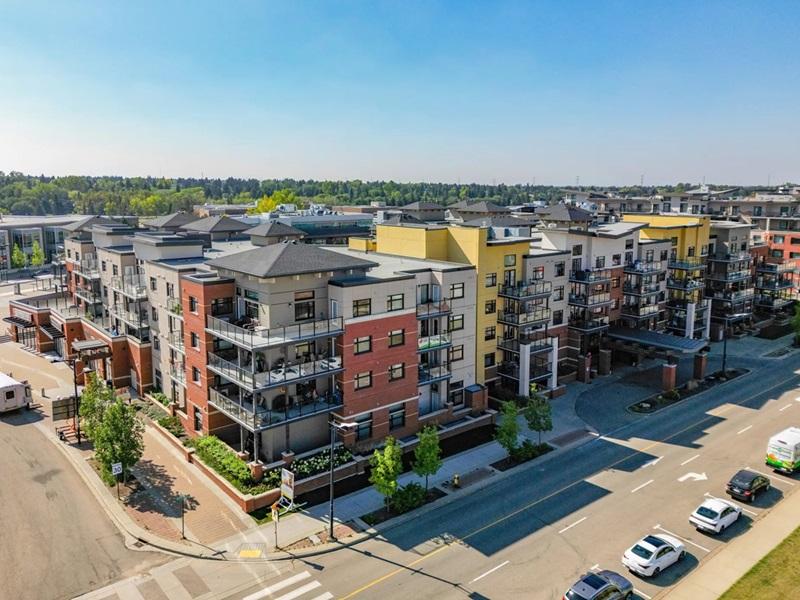
The Richmond Industrial Centre is being developed by Montrose Properties and Omicron. (Courtesy Montrose)
The 170-acre master-planned Richmond Industrial Centre is more crucial than ever as global supply chains become more vulnerable, cargo volumes grow at the Port of Vancouver and Metro Vancouver’s supply of industrial space remains under intense pressure.
“There have been a bunch of drivers, and certainly one of the more recent ones is COVID and the acceleration of the shift to e-commerce by Joe and Sally consumer, and the geopolitical risk as we see tensions in the South China Sea, and disrupting shipping when we see container ships blocking the Suez Canal,” said Guy Akester, vice-president, real estate at Montrose Properties, the developer behind Richmond Industrial Centre.
The reaction to such upheaval “is to store more product in the market where you want to sell it . . . don’t rely on just-in-time supply chains,” he said.
That means increased demand for bigger, taller buildings on large footprints, with efficient road access.
“Overall, you’re going to store a lot more product in market so our project is really focused on supporting that part of the global supply chain.”
Montrose and Omicron’s Richmond Industrial Centre
For the last couple of years, Montrose Property Holdings, in partnership with developer and construction company Omicron, has been building the largest single-owner industrial park in the region.
The property sits atop of a former landfill near the George Massey Tunnel and to the west of the Port of Vancouver’s Richmond Logistics Hub.
A 200,000-square-foot building for auto parts tenant WorldPac has already been completed on 12.5 acres, and a 503,000-square-foot building on 22 acres is under construction, to be completed in 2022. Another 275,000-square-foot building on 10.5 acres is in the pipeline, followed by a 500,000-square-foot building on 22 acres.
Tenants for those buildings have not been announced.
Once complete, the park will consist of more than three million square feet of space and provide up to 6,000 jobs, considering the recent boost in e-commerce.
The current plan is for 12 buildings and if the developers continue to build one building per year, the timeline for completion will be a decade.
Tenants for such large-scale sheds will be multi-national companies, said Akester, who noted the master plan includes amenities including bicycle paths, public art, parks and ponds.
“It’s build to core. We plan to hold it forever and that’s unusual — most folks will sell at least half. Our model is different. We build it, hold it, and when it needs to be rebuilt, we will rebuild it and continue to hold it,” said Akester.
“And because we are reusing land, because it’s a former landfill, it’s kind of the ultimate recycling. It also lends itself to retaining ownership.”
Construction costs rising, labour in short supply
It’s also risky, because although demand is strong, there are labour shortages and construction costs have soared.
“We are fortunate because we are contracted for the building under construction now, so we are super confident with that. But for future buildings there is a bit of a question mark over how much will it cost to build? How long will it take, be it approvals from municipalities, or delivery of key materials or trades to do the work?” said Akester. “Fortunately, rents are going up as costs are going up. But, yeah, as a developer it increases your risk substantially.
“Generally you secure the tenant first, then go build the building. You lock in the rent today but your costs are up three years into the future. What kind of inflation do you expect in that period? You go from profit to loss pretty quickly.”
However, Montrose will be delivering its first few buildings, at least, into a market starved for space. Metro Vancouver currently has no available industrial space over 50,000 square feet, according to Colliers’ most recent report.
The region-wide vacancy rate is just 0.5 per cent, the lowest in North America.
Richmond Industrial Centre property former landfill

The Richmond Industrial Centre will deliver about 3 million square feet of space over the next few years. (Courtesy RICIndustrial.com / Montrose)
The developer’s ownership of the site goes back about 40 years, when Ecowaste Industries Ltd. was running the operation, one of the region’s biggest landfills for construction and demolition waste.
Major lime and limestone products company Graymont, an established family-run business, had purchased Ecowaste Industries and its Richmond property holdings, which total 477 acres.
At the end of 2014, Graymont created Montrose Property Holdings to develop the 170-acre industrial site and Ecowaste became an operating subsidiary. The development began at the start of the pandemic, which was when Akester came on board.
Akester had previously worked in real estate transactions while at TransLink and Telus, and in various commercial and industrial roles in Europe and Asia.
Plans to build over the south portion of the landfill go back several years, when it became clear the landfill was soon going to reach its limit.
“The way we placed the waste in the landfill was effectively in cells, keeping in mind the buildings that we would put on top. It’s fully engineered land. So you have to have that in mind whilst you’re filling the landfill,” Akester explained.
“So we’ve done that on the south, with the closed landfill. We purposely placed waste in a way that facilitated putting buildings on top at a later date.”
The underground structure offers flexibility because the developer can change the layouts and build bigger or smaller buildings and even combine them. That’s a key feature, because market acceleration is pushing Montrose to move faster and higher, which means going back to the city of Richmond for permission.
Transportation issues to be solved
A major challenge so far is accessibility, which is a common issue for industrial parks, said Akester. They’re in dire need of a western connection to prevent congestion and holdups, not just for trucks but for employees.
They’d also like to go higher in building height to add square footage, and because the site is surrounded by agricultural land, he said, it won’t obstructing anybody’s views. The building currently under construction has 40-foot clear height, but Akester said the tenant has requested to go to 60 feet.
“We are looking at accelerating where it makes sense,” he said. “We have a general plan, but we are looking at multi-storey ways to increase the overall square footage of the park and build more efficient buildings, particularly if we can get other connections to the site.”
The Richmond Industrial Centre is part of a larger district around the Port of Vancouver‘s logistics hub, making transportation a key issue.
“When we are all done here, all the owners, the Port of Vancouver and others, there will be over 10 million square feet of industrial space,” said Akester.
“So if we are three million square feet and we’ve got 5,000 to 6,000 jobs here, all going in and out of one connection point and having to drive a lot further — just because the transportation connections are challenged — all these things are going to reduce the productivity of our industrial real estate.”











